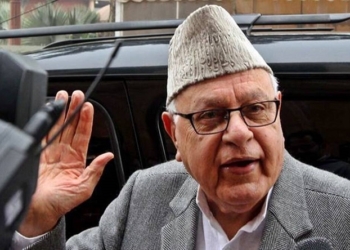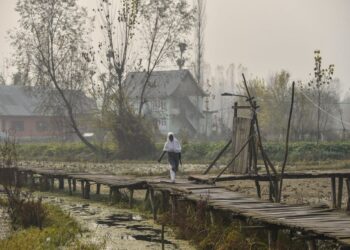
By Asma Majid
THE early morning air hangs delicately above the road, infused with the promise of a new day. As the first rays of light culminate in painting the sky in soft hues, the road awakens from its slumber, pulsating with life.
Amidst the rhythmic symphony of shuffling feet and clacking heels, Areeba stands along the pavement, where the road meets the sidewalk – her presence a singular figure amidst the sea of commuters. Waiting for a public bus, she witnesses people navigating through the narrow roads created by the New Smart City, some eagerly hopping onto buses and vans, hoping to secure a spot for their journey, while others briskly walking, determined to keep up with the fast pace of the city life. Amidst this ongoing street struggle, memories of a cherished service resurface in her mind, a service which was there for her kind. Once her trusted ally, and a steadfast presence in her life, she recalls her former chariot of transit—the Ladies Special Service Bus.
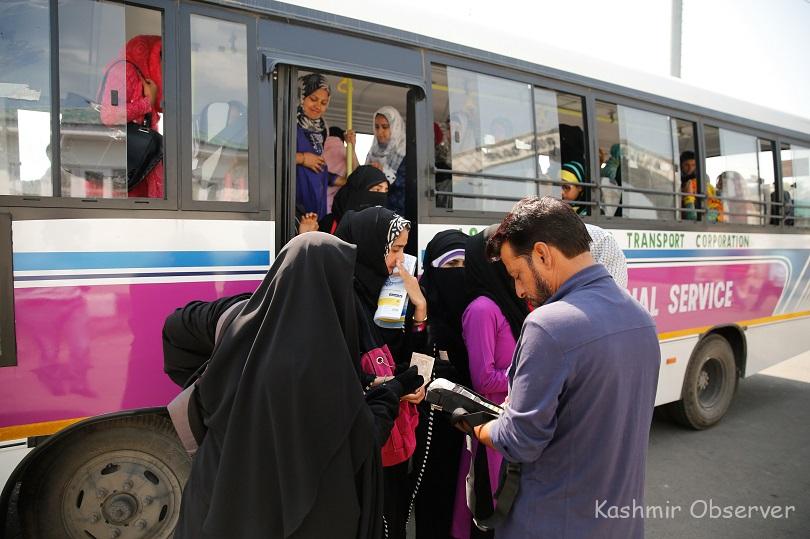
Once regarded as a promising and inclusive form of transit for women, the Ladies Special Transportation Service faced a disheartening fate when it found no place within the New Smart City framework of Srinagar. While an emphasis was placed on creating separate cycling paths, little attention was given to cultivating a cycling culture among the people of Srinagar. The narrowing down of existing roads to accommodate cycling paths has further limited the available space for special vehicles like the afore-mentioned which has deprived women of a dedicated service that could have empowered and enhanced their commuting experience in the evolving urban landscape.
Areeba, a student at the University of Kashmir has become well-acquainted with the ebb and flow of the bustling road – her constant companion on the academic quest. Yet every day, reminiscing her dalliance with the Ladies Special Service Bus, she hankers for the short lived sisterhood of shared dreams and aspirations with fellow commuters.
“Each morning, like clockwork, the bus would arrive at a specific time, its vibrant exterior adorned with the emblem of convenience and empowerment”, she says.
As the doors of the bus would open, she would step inside, welcomed by a warm atmosphere. The bus, a sanctuary of female empowerment, buzzed with conversations, laughter, and the exchange of ideas.
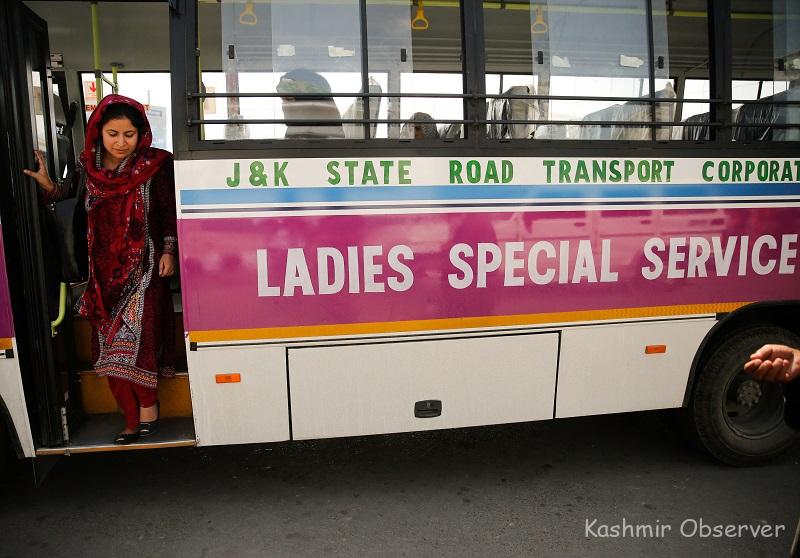
“It was a microcosm of diverse experiences, a fusion of voices and perspectives that enriched my journey”, Areeba adds.
The introduction of this dedicated transportation service had come about as a much-needed respite for the women of the region in the year 2016. Among a fleet of five buses, three traversed the bustling streets of Srinagar, while one graced the town of Baramulla (North), and another journeyed through Anantnag (South). This thoughtful initiative breathed a new life into the daily commute of women, particularly the college and university students, who had long endured the trials of public transportation.
What followed was a remarkable decline in the instances of harassment, instilling a newfound sense of safety for women traveling to and from their workplaces and educational institutions. Parents, too, found solace in the presence of this segregated mode of transport.
Like Areeba, Nasreen, an employee in a private firm, found herself embarking on a new chapter in her daily commute.
“After enduring the chaos and unpredictability of the local transport with no segregation of men and women, it was here that I discovered solace”, she says.
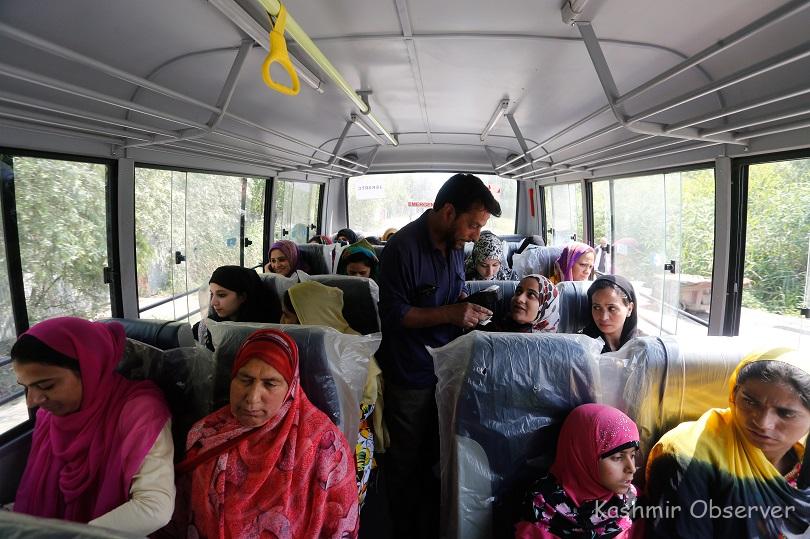
In the realm of transportation, Nasreen’s experiences had been riddled with tumultuous journeys. The local buses with their unruly blend of noise and clamor, had subjected her to hours of discomfort and inconvenience. Packed like sardines, passengers jostled for space, the air heavy with perspiration and the collective sighs of exhaustion. It was a scene akin to a chaotic market, with its cacophony of voices and frenetic energy.
A particularly repulsive incident on the public bus had left Nasreen deeply disgusted and made her develop a strong aversion towards using the shared public transportation.
She recalls an incident when she boarded the crowded public bus on a sunny afternoon, hoping for a peaceful journey back home after a long day at work. Finding an empty seat near the back, she settled in, sighing with relief as the bus started moving. Little did she know that this seemingly ordinary bus ride would soon turn into a harrowing incident that would leave her in a shock. As the bus filled up, more passengers squeezed in, and Nasreen suddenly found herself pressed against the window, unable to move. Among the throng of people, she noticed a man standing uncomfortably close to her, invading her personal space. She shifted uncomfortably, hoping he would realize his intrusion and move away, but the man seemed oblivious to her discomfort. As the bus jostled along, she mustered the courage to speak up and firmly asked the man to back off and leave her alone, hoping her assertiveness would put an end to the harassment. However, her warnings went unheeded as the man quickly grew crude and nasty. Just then an old man noticed her distress and stepped in to confront the harasser, defending her and putting an end to the ordeal.

Nasreen’s traumatic experience on the shared public bus had left her shaken and disheartened. But oh! the transformation that occurred when she boarded the ladies special bus!
“It was like stepping into a realm of tranquility, I found myself enveloped in a haven of comfort and convenience.”
The bus, specially designed to cater to the needs of women, boasted spacious seating, ample legroom, and an ambience of serenity. No longer did Nasreen fear the maddening rush and jostling of bodies. Here, in the refuge of the ladies special bus, she found respite from the daily battle of finding a place to stand, let alone sit. The journey, once a tedious ordeal had transformed into a pleasant diversion. But it was not just the physical comforts that endeared her to the ladies special bus. It was the intangible sense of empowerment that filled the air in it. Surrounded by fellow women from diverse walks of life, she felt a surge of inspiration. Their conversations ranged from the profound to the mundane, but all shared an undercurrent of camaraderie and strength.
Alas! As time unfolded, the anticipated progression and expansion of women-centric transportation took an unexpected turn, veering away from the optimistic trajectory initially envisioned.
When Nasreen got to know that the ladies special bus she had come to rely upon would be no more be plying, the news reached her ears like a thunderclap. The very foundation of her newfound comfort crumbled before her eyes, leaving her stranded in a sea of uncertainty.
The absence of the ladies special bus was felt keenly by Nasreen. She stood at the proverbial crossroads, pondering her options with a furrowed brow. A cab service emerged as the apparent solution, beckoning her with its promises of convenience and comfort. But alas! the price tag that accompanied this luxury struck her like a slap across the face. It demanded nearly more than half of her hard-earned salary, rendering the notion of affordability a distant dream.
The introduction of these cab services had once unfolded a new chapter in the realm of transportation as, exemplified by the advent of Novo Cabs that made their debut in the winter of January 2021in the picturesque landscapes of Kashmir. This development had stirred a palpable sense of anticipation among the populace, kindling a belief that traversing the region would be endowed with a fresh wave of convenience and ease. With the arrival of Novo and its counterparts, a wave of optimism swept through the hearts and minds of the people. The prospect of embarking on journeys with the click of a button ignited a flicker of hope, promising a departure from the traditional norms of transportation. But the soaring prices of cab services have cast a shadow over their once-promising appeal, rendering them a privilege seemingly reserved for the affluent few.
On one hand, the Cab Service Providers assert that their business is brisk. According to Muneeb, manager, Hala Cabs Kashmir, which began operating in the valley in March 2022, they receive approx. 400 requests for ride bookings daily, 80% of which come from female passengers. While acknowledging that their rates have evolved over time, Muneeb claims that this has not had any impact on the volume of reservations and that they continue to flow in each and every day.
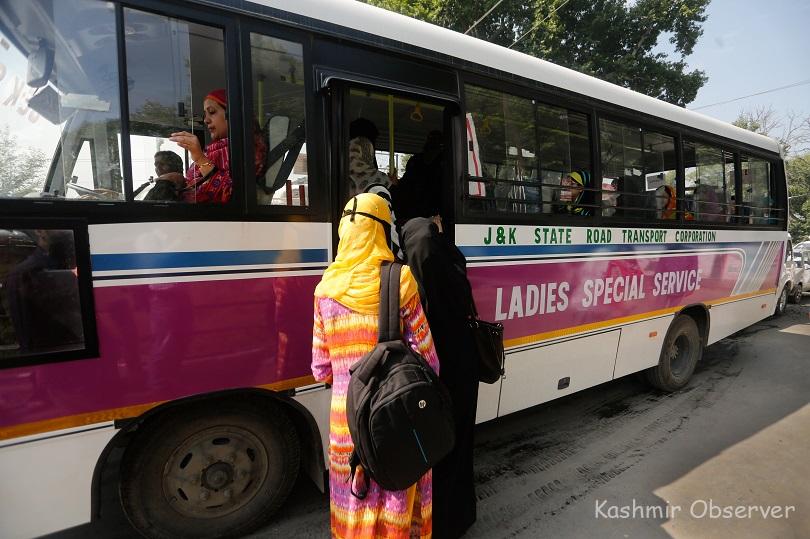
On the other hand, Nasreen’s perspective offers a different narrative altogether.
“Cab services are a luxury. People mistakenly believe that they have provided a relief from the congested public transport. This is not the case. The cost of cab services is so exorbitant that an average person would rather walk than use them”, she says.
“They want hundreds of rupees for trips between two to three kilometres. Additionally, they charge up to 20,000 rupees if you reserve them for one month of back and forth service”, she adds.
With a gradual shift in the tides of time, the ladies special bus, which had long served as a haven for women commuters, faced a fate both unforeseen and unfortunate. Slowly but surely, its presence diminished on the roads, with each passing day witnessing its dwindling numbers.
But it was not solely the decline in its frequency that caused consternation among the women populace but the very essence of its identity that suffered a blow, leaving its commuters perplexed and disoriented. The once-proud buses that bore the moniker “ladies special” underwent a curious alteration.
Now, as they roam the streets, these vehicles appear merely as “special service buses.” The word “ladies” has vanished from their tags, erased from the public eye as if it were an inconsequential afterthought. And with its absence, an intangible yet palpable void lingers among its commuters from the student and the working community, leaving a question mark in their hearts and minds.
Riyaz Ahmad Khan, Traffic Manager, City Services Srinagar, sheds light on the reasons behind the disappearance of the Ladies Special Service buses. He attributes their decline to the emergence of more luxurious and dependable E-buses introduced as part of the Smart City Programme, which even offer reserved seating for women. According to Khan, this shift in preference towards E-buses has played a significant role in the diminishing popularity of the former.
“Our pollution-free E-buses, launched in 2019, operate on rechargeable batteries, eliminating the need for fuel. These comfortable BS6 buses significantly reduce pollution. The first 10 seats on the 30-seater E-bus are designated exclusively for female passengers, affecting revenue which the corporation needs to keep them running.”
Khan believes that the afore-mentioned transition reflects a positive shift towards enhancing the overall commuting experience for women while embracing the benefits of electric transportation.
“With the availability of 20 E-buses, women’s transportation needs have been catered to, rendering any requests for the resumption of the ladies special buses unnecessary”, he says.
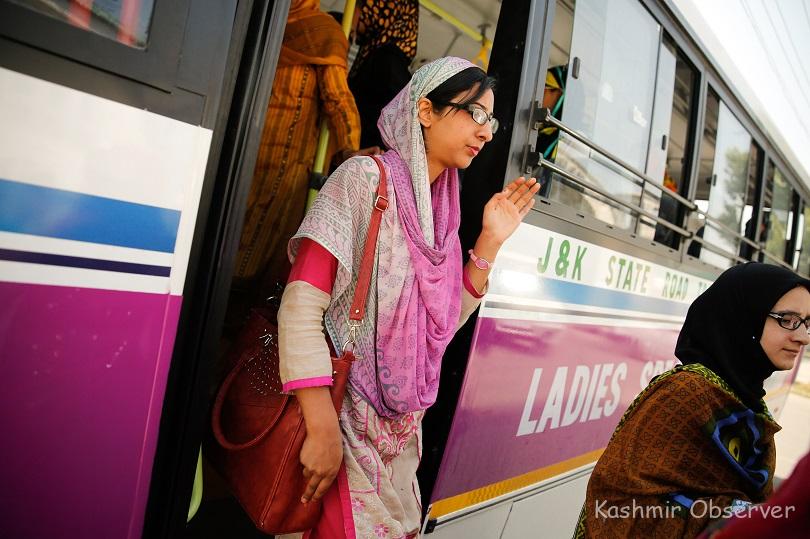
Parvez Abdullah, Kashmir’s General Manager of District Services, on the other hand, brings forth an alternative viewpoint by highlighting the requests he has received for the resumption of the afore-mentioned. These requests indicate that E-buses may not be fully catering to the specific needs of women, despite their portrayal as a suitable solution. Abdullah’s perspective suggests that there are certain aspects and considerations unique to the ladies special buses that are yet to be adequately addressed by the current E-bus system.
He even assures that the women’s special transportation services have not been entirely terminated.
“The Divisional Commissioner of Srinagar has instructed the Regional Transport Office (RTO) to consider the reinstatement of these services, prompted by numerous requests”, says Abdullah.
He further announces a forthcoming meeting with his team to discuss the possibility of introducing a ladies special bus on the Lal Chowk to Soura route which would cover places like Dargah Hazratbal to serve the requirements of the college and university students.
“However, an issue plagues these buses”, he adds.
As Abdullah continues, he delves into the contributing factors that have led to the decline of these dedicated buses. He emphasizes on how certain aspects have played a role in its diminishing popularity and usage.
“Despite their capacity of around 20 seats, only a handful of women, typically 5 to 6 or at the most 10 to 12, would occupy these buses. Consequently, a sense of monotony permeated the atmosphere. Furthermore, in this fast-paced era, where time is scarce, women are unwilling to wait for the ladies special buses that adhere to specific schedules. Instead, they are prepared to board any available bus to reach their destinations promptly”, he says.
When questioned about the adherence to the 33% reservation quota for women in the E-buses, Abdullah assures, “No complaints have been received thus far. I have shared my personal number to address any instances where managers, employees, or crew members (drivers and conductors) fail to comply. Immediate action will be taken in the event of violation of rules.”
He also brings attention to a concern that emerged in the Budgam District, where the women reservation quota in the E-buses was not being followed. However, he assures that swift action was taken to rectify the situation post which no new complaints were received.
Bashir Ahmad, an orderly in the Secretariat and a former conductor to one of the ladies special buses plying in Srinagar recalls how these buses had become a beacon of hope and comfort for women.
“The bus served not only as a means of transportation but also as a hub of connectivity. Women would strike up conversations with fellow passengers, forging friendships and expanding their social network. They would discuss their studies, share insights and experiences, and sometimes even engage in spirited debates on the topics that captivated their minds”, Bashir says.

He passionately emphasizes that all the women who relied on the bus he operated were deeply disheartened upon learning that the service would no longer be accessible.
“They pleaded for some action to be taken, but as employees at the lowest echelon, we were powerless to intervene”, he adds.
Areeba reminisces about the days when she eagerly awaited the arrival of the ladies special service bus, appreciating its unwavering commitment to punctuality. A testament to reliability, the bus, honored the precious time of its passengers and ensured that they reached their destinations promptly. In the tapestry of her life, the ladies special service bus had once been an integral thread, weaving convenience, connectivity, and empowerment into her daily routine. It had served as a monument to the indomitable spirit of women like her, propelling them forward on their unique paths, both on and off the road.
Standing along the pavement and engrossed in her nostalgic recollections, Areeba is suddenly jolted by the blaring horn of the arriving public bus, overwhelmed with an excess of passengers. Startled from her reverie, she casts a wistful glance at the bustling vehicle, inhaling a sigh that carries the weight of unspoken longing. Steeling herself to join the throng, she steps forward to embark upon her journey.
- The author can be reached at [email protected]
Follow this link to join our WhatsApp group: Join Now
Be Part of Quality Journalism |
Quality journalism takes a lot of time, money and hard work to produce and despite all the hardships we still do it. Our reporters and editors are working overtime in Kashmir and beyond to cover what you care about, break big stories, and expose injustices that can change lives. Today more people are reading Kashmir Observer than ever, but only a handful are paying while advertising revenues are falling fast. |
| ACT NOW |
| MONTHLY | Rs 100 | |
| YEARLY | Rs 1000 | |
| LIFETIME | Rs 10000 | |






